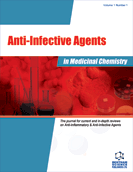Abstract
The antimicrobial peptides represent diverse structures for drug design. They have been looked at as potential sources of new antimicrobial drugs to combat the increasing threat posed by multiple drug resistant microorganisms. Unfortunately, peptides themselves provide inferior drug candidates because of their low oral bioavailability, potential immunogenicity, poor in vivo metabolic stability, high molecular weight and most importantly being exposed by enzymes like proteases. Recent efforts to resolve disadvantageous peptide characteristics, and thus generating practical pharmaceutical therapies, have focused on the creation of non-natural peptide mimetics. Peptidomimetic molecules may have reduced immunogenicity and improved bioavailability relative to peptide analogues. Also the artificial backbone makes most peptidomimetics resistant to degradative enzymes thus increasing the stability of peptidomimetic drugs in the body. In this article, after introducing antifungal peptides, benefits and limitations, and peptidomemetics usage are discussed and applications in drug discovery process and antifungal research will be presented.
 18
18





















